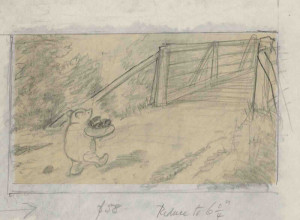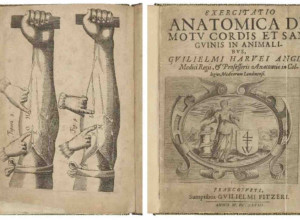Fall Exhibition at the Boston Athenæum Explores New Acquisitions in Painting and Sculpture
(Boston, MA, August 22, 2013)—Since the year 2000, the Boston Athenæum has added more than fifty paintings and sculptures to its collection of fine arts. Collecting for the Boston Athenæum in the 21st Century: Paintings and Sculpture, on view in the Athenæum’s Norma Jean Calderwood Gallery from September 25, 2013, through February 15, 2014, features the highlights, including paintings by Cephas Thompson, William McGregor Paxton, William Morris Hunt, John Sloan, and Frank Duveneck and sculpture by Thomas Ball, Leonard Baskin, Bashka Paeff, Richard Henry Park, and Albert Wein . All have been acquired for the Athenæum by gift, bequest, or purchase since the turn of the twenty-first century.
Besides exploring recent directions in the Athenæum’s collecting, the exhibition serves as an update and addendum to the paintings and sculpture section of the Athenæum’s bicentennial exhibition, Acquired Tastes: 200 Years of Collecting for the Boston Athenæum. This 2007 traveling show surveyed the Athenæum’s collecting during its entire first two centuries.

“At least twenty percent of the objects in the current exhibition have a connection to another object or group of objects already in the collection,” says David B. Dearinger, Susan Morse Hilles Curator of Paintings & Sculpture. “Others fill historical or aesthetic gaps in the collection, especially for those periods in the history of American art, such as the late nineteenth and early twentieth centuries, when the Athenæum was doing little systematic collecting of art.”
Among the works in Collecting for the Boston Athenæum is William McGregor Paxton’s Impressionist-influenced Elizabeth Vaughan Okie (ca. 1895). Okie was a Boston artist who later became Paxton’s wife. “This is the earliest known portrait of [Elizabeth Okie] by her husband,” Dearinger says, “and may have been painted specifically for her, possibly as an engagement or wedding gift. Most of Paxton’s early paintings were destroyed in a studio fire in the first decade of the twentieth century, making this a rare survivor of that part of his oeuvre.”
Albert Wein’s plaster maquette Libby Dam, 1973, is, as Dearinger notes, a study for the sculptor’s “chef d’oeuvre, a monumental relief sculpture that he created in 1973 for the Treaty Tower of the New Libby Dam in Montana. The finished sculpture measures over thirty by twenty seven feet and was carved from Vermont granite.” The work is a gift from the artist’s estate.
Polly [Ethel] Thayer’s engaging Shopping for Furs (ca. 1945) brings the total number of Thayer’s paintings in the Athenæum's collection to seven. The work is “the first genre painting by Thayer to enter the collection and, therefore, adds depths to the institution’s holdings. Undoubtedly posed by a carefully selected model, the figure is a brilliant study in the numbing exhaustion brought on by the mundane, ultimately meaningless activity of shopping for luxury items.”
Born in 1904, Thayer had a remarkably long artistic career in Boston and died in 2006, aged 101. This work was acquired in 2010.
Prominent Boston School painter William Morris Hunt’s allegorical nude, Boy with a Butterfly (1870), illustrates Hunt’s classical training in Dusseldorf and Paris and the influence of contemporary French painters such as Thomas Couture and Jean-François Millet. The painting was originally in the collection of Hunt’s famous architect brother, Richard Morris Hunt, and remained in the family until its bequest to the Athenæum in 2004.
The Boston Athenæum began actively collecting and exhibiting art in 1827, one of the first American institutions to do so. It has continued to collect ever since, even after closing its public exhibition spaces in 1876. In July of that year, after several years of exhibiting at the Athenæum’s galleries, the Museum of Fine Arts, Boston, opened its doors in its first permanent home in Copley Square. Thereafter, the Museum of Fine Arts took on the role of Boston’s leading public art museum.
The Athenæum’s art collection now constitutes over 100,000 works, including paintings, sculptures, prints, drawings, photographs, and decorative arts. When the Athenæum’s Norma Jean Gallery opened in 2002, the Athenaeum reinvigorated its program of public art exhibitions.
About the Norma Jean Calderwood Gallery:
Located on the first floor of the Boston Athenæum’s National Historic Landmark building at 10 1/2 Beacon Street in the heart of Beacon Hill, Boston, Massachusetts, the Norman Jean Calderwood Gallery is the Athenæum’s main public exhibition space. The gallery is open to the public from 9:00 a.m. to 7:45 p.m. Monday through Wednesday; from 9:00 a.m. to 5:15 p.m. on Thursday and Friday; and from 9:00 a.m. to 3:45 p.m. on Saturday. Admission to special exhibitions in the Calderwood Gallery is free to members; $5.00 for nonmembers. Closed on major holidays.
About the Boston Athenæum:
Founded in 1807 by many of Boston’s leading intellectuals, the Boston Athenæum is one of the nation’s oldest cultural institutions. Historically, it has played a significant role as an innovator and catalyst in the creation of public libraries, modern library classification systems, book conservation laboratories, and American public art museums. Among its many treasures are one of the world’s leading collections of American Civil War materials and part of George Washington’s library from Mount Vernon, the largest portion in any institution. Past Athenæum members have included such authors and writers as Ralph Waldo Emerson, Henry David Thoreau, Nathaniel Hawthorne, Louisa May Alcott, Oliver Wendell Holmes, Sr. and Jr., Margaret Fuller, and Amy Lowell; U.S. Presidents John Quincy Adams and John Fitzgerald Kennedy; and U.S. Senator Edward M. Kennedy.
Today, the Boston Athenæum comprises a membership and research library with 750,000 volumes (100,000 rare), an art museum and public gallery, and a civic and cultural forum presenting readings, talks, lectures, and concerts by leading contemporary authors, politicians, social activists, and artists.















